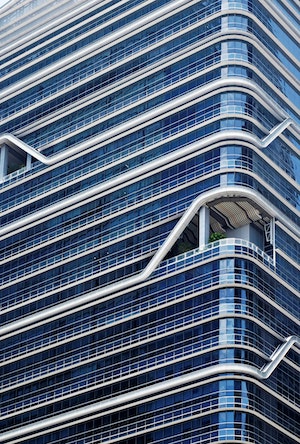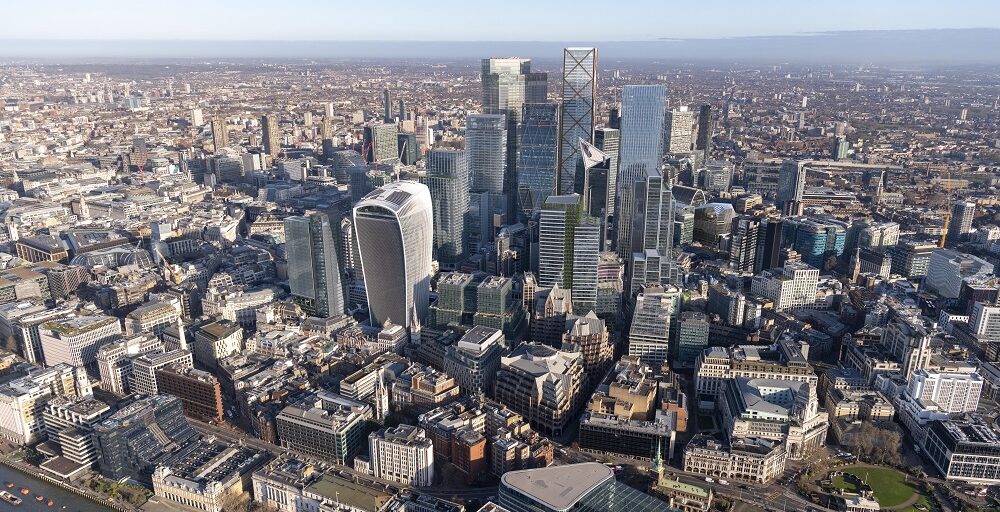One of the many consequences of the Covid-19 pandemic and lockdowns on the property industry is the renewed focus on ‘healthy’ buildings.
While we have become well-used to building regulations and ISO standards for construction, governing things like materials, cladding and fire risk, there is an increasing appetite for buildings to adopt more holistic measures which improve the environment for residents and occupiers – covering the approach to hygiene, light and noise.

The WELL standard was launched in the United States in 2013, aimed at marrying design with evidence based medical and scientific research. While wellness ratings for buildings are not new, the trend has definitely garnered further interest on account of the pandemic. Other ratings developed such as BREEAM, SKA and LEED show a growing awareness of sustainability standards, considered through climate resilience and energy efficiency.
Evidence of this increasing wellness trend can be seen at Grosvenor’s London headquarters, where pollution-neutralising paint and smart lighting were installed last year. The Future Works, an office space in Slough, was recently fitted out with solar control, heat reclaim technology and biophilic design.
However, wellness accreditation is now focused as much on the wellbeing of residents, occupiers and visitors as well as the eco-credentials of the building.
The relatively new IMMUNE certification is the first, open-source global standard to verify a building’s ability to withstand present and future health challenges. Inspired by technologies successfully implemented by hospitals and ‘clean rooms’, the IMMUNE standard was recently adopted by the new Mace HQ at 155 Moorgate, London. By building on a ‘safety first’ culture, priorities such as health, safety and wellbeing have become firmly ingrained in the company’s philosophy. In turn, this will help employees feel confident about returning to work safely.
NOW READ: Why you should invest in the Algarve’s property market
The highest level of IMMUNE rating is only given to buildings which meet stringent requirements for hygiene, sanitisation, air quality, water quality, lighting, hands free access, safe delivery procedures, social distancing measures and noise control.
Although it was first developed for commercial buildings, we are now seeing the rating adapted for use in residential, hospitality and retail buildings by the most forward-thinking developers.
With increasing amounts of research being dedicated to the connection between the buildings where we spend up to 90 per cent of their time, and the health and wellness impacts these buildings have on us, designs like these will prove key as we reimagine the post Covid-19 era.
As all sectors of society re-open, indoor spaces are having to be revised and enhanced in line with a plethora of new safety measures and designs. Consequently, there will be an urgent need to re-design and re-engineer indoor spaces, to create both productive and safe environments, with the capacity to fight the spread of viruses. Developers must now consider the ‘biome’ of their buildings, to ensure positive living and working environments.

We will see the increasing consideration of measures such as walls covered with antimicrobial paint, proven to prevent bacteria as well as mould and mildew growth.
Smart building technologies such as hands-free virtual doors will offer a safe and socially distanced solution, ideal for high-rise buildings where communal touch-points are considered a key risk area.
What’s more, there will be widespread adoption of improved lighting, acoustics, biophilic design and air quality.
As we adjust to life in a world with Covid-19, and whatever else the natural world throws at us in the future, it is vital all developers consider the ‘biome’ of their buildings, to ensure our living and working environments are supportive of our overall wellbeing. The onus is on developers to provide both a productive and safe environment for occupiers and tenants alike.
Feature Image: plans for the ‘green’ Citicape House.







